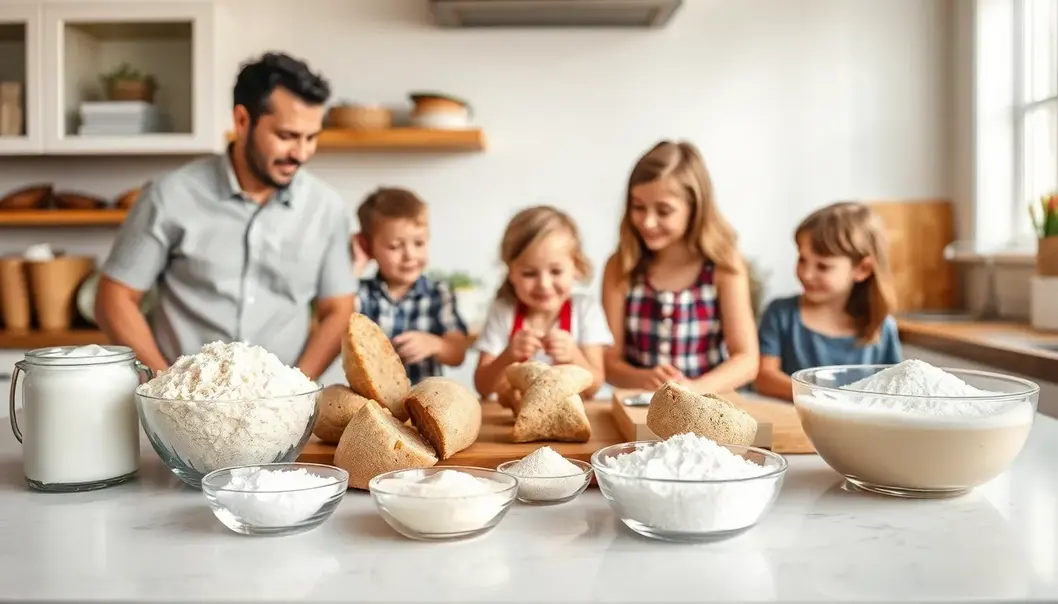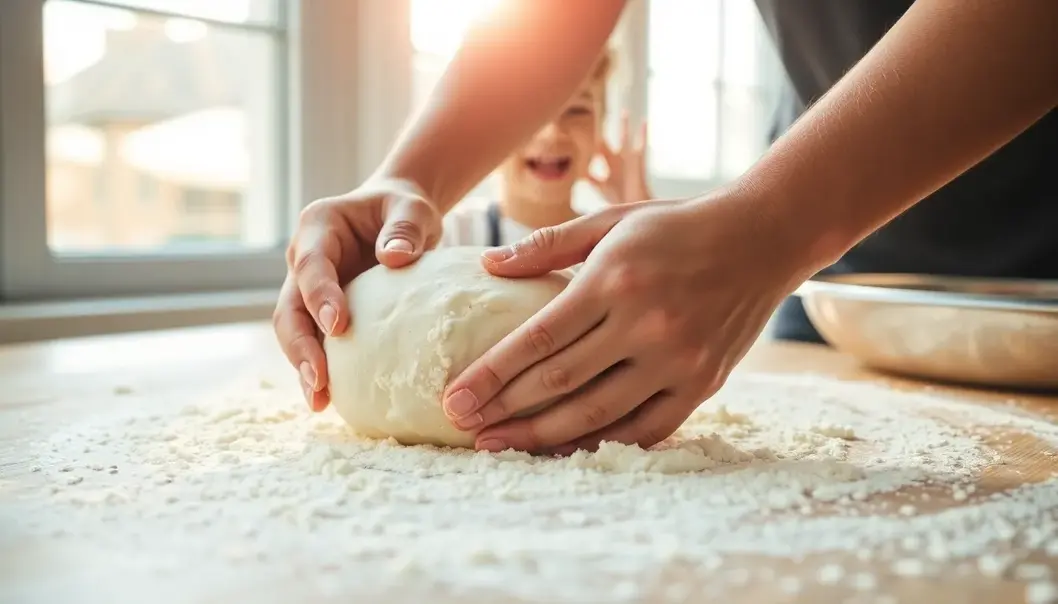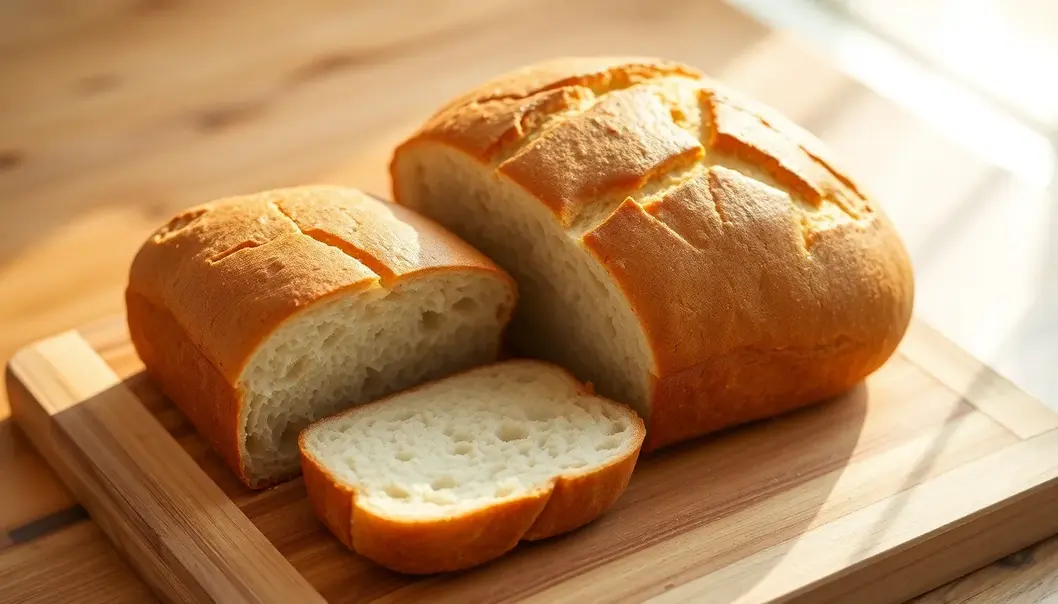Baking bread at home can seem daunting, yet it offers a nostalgic comfort that reminds us of simpler times. Parents looking to get involved in this satisfying craft will discover that it’s not just about the ingredients but also about the technique and a little patience. With busy schedules, finding ways to engage the whole family in the baking process can be both rewarding and educational. In this guide, we build confidence against common baking hurdles and provide essential insights for creating delicious, perfectly textured homemade bread that the whole family will love.
Choosing the Right Ingredients

The journey to perfect homemade bread starts with selecting the finest quality ingredients. Each component of your bread significantly influences its texture and flavor. Begin with the foundation of any good loaf: the flour. Fresh, high-quality flour can make a notable difference. Opt for unbleached flour to ensure a richer taste and more nutrients. Consider experimenting with different types like whole wheat, rye, or specialty bread flours for varied textures and flavors.
Yeast is another critical ingredient. Choosing the right type can transform your bread, influencing its rise and texture. Active dry yeast is a reliable choice for most breads, offering a consistent rise. Instant yeast can be added directly to your dry ingredients, saving you time. Such small decisions in yeast selection can shape your bread’s final character.
Water, often underestimated, plays a crucial role. Using filtered water ensures no impurities interfere with the yeast’s activity or alter the dough’s taste. The temperature of the water is equally important; warm water helps yeast activate effectively, promoting a good rise.
Involving children in the ingredient selection process can turn grocery shopping into a delightful learning journey. Visit farmers’ markets or specialty stores with them to educate about the origins of each component. Let them feel the texture of different flours or smell the various types of yeast. Discuss how each ingredient contributes to making bread. This enriches their understanding and fosters a love for healthy, homemade food. Making the shopping trip an adventure prepares them for the next exciting steps in the baking process, covered in the upcoming chapter on kneading and proofing.
With these strategies, selecting ingredients becomes not just a task, but a joyful part of baking, echoing through generations of shared culinary traditions.
Mastering the Art of Kneading and Proofing

Kneading is an integral step in bread making, transforming a simple mixture of flour and water into a cohesive dough with the gluten structure necessary for perfect bread texture. To master kneading, begin with clean, lightly floured surfaces and hands. Use the heel of your hand to push the dough away from you, then fold it back over itself. Rotate the dough, repeating this process rhythmically, applying consistent pressure. Over time, the dough becomes more elastic and less sticky, a signal that gluten networks are forming adequately.
A well-kneaded dough should be smooth and supple, passing the windowpane test. To do so, stretch a small piece of dough until it’s thin and translucent without tearing. This indicates optimal gluten development, crucial for a perfect crumb structure in baked bread.
Proofing, the next critical phase, allows dough to rest and rise as yeast ferments. This stage significantly influences the texture and flavor. Properly proofed dough will roughly double in size. A gentle poke test helps assess readiness; a properly proofed dough should slowly spring back when prodded. Impatience might lead to under-proofing, resulting in dense bread, while over-proofing may cause collapse and reduced oven spring.
Engage your family in this journey with fun kneading techniques. Encourage kids to explore their creative side—perhaps naming their dough or pretending to be artisan bakers. Use lighthearted competition to spot the smoothest dough or the most adventurous kneader. Such approaches make the process enjoyable and educational, fostering a deep understanding of bread-making.
Understanding the science of kneading and proofing injects confidence into your baking. With practice, these skills become as intuitive as any other daily routine. As a bonus, baking at home means you control the process, ensuring consistent quality in every loaf. As you and your family develop these skills, imagine the possibilities for experimenting with new flavors and styles, enhancing the joy of homemade bread.
For creative ideas on how to integrate these techniques with family activities, explore our blogs.
Final words
Creating homemade bread brings warmth and joy to family life, offering moments of learning and collaboration. With these tips, parents can turn baking into a cherished tradition, cultivating skills that children can carry forward into their own homes. With every loaf, let smiles and shared experiences rise together.
Start your bread-making journey with our easy-to-follow tips and join our newsletter for more family-friendly recipes.
Learn more: https://www.breadmakershub.com/newsletter-signup
About us
Bread Makers Hub offers a variety of baking courses tailored for families. Our mission is to inspire confidence in home baking, making it an enjoyable and fulfilling experience. With expert guidance and community support, families can explore the art of bread-making together.

